Reading or listening to funny stories every day brings happiness to kids and helps them become better readers, according to SplashLearn research. I remember when my nephew refused to go to bed until we discovered “Dragons Love Tacos” – suddenly bedtime became the highlight of his day instead of a nightly battle. The power of humor in bedtime stories transforms reluctant sleepers into eager listeners who actually look forward to winding down.
You know that moment when you’re exhausted, it’s 8:47 PM, and your 4-year-old announces they’re “not tired at all”? Yeah, that’s when you need these stories in your back pocket. I’ve rounded up 25 hilarious bedtime stories that actually work – trust me, I’ve tested them all on real kids who have strong opinions about everything.
Table of Contents
-
What Makes a Great Funny Bedtime Story
-
Classic Silly Character Stories (Stories 1-5)
-
Animal Adventure Comedies (Stories 6-9)
-
Wordplay and Language Fun Stories (Stories 10-13)
-
Bedtime-Specific Humor Stories (Stories 14-17)
-
Interactive and Participation Stories (Stories 18-21)
-
Modern Funny Picture Books (Stories 22-25)
-
How These Stories Measure Up Against Key Selection Criteria
-
Transform Your Bedtime Routine with AI-Powered Storytelling
-
Final Thoughts
TL;DR
-
Here’s what I’ve learned works: Toddlers lose their minds over silly sounds and animals doing dumb things. Preschoolers love when characters mess up in ways they can relate to. And older kids? They’re all about clever jokes and stories that make them feel smart.
-
The sneaky thing about good bedtime stories is your kid is learning stuff without realizing it – picking up new words, figuring out how characters solve problems, and processing their own feelings. It’s like vegetables hidden in mac and cheese, but for their brain.
-
Books with sound effects and repeated phrases are gold – kids love showing off by “reading” along, and it builds their confidence with words
-
Match the story length to your sanity level and how much time you actually have (not how much you think you should have)
-
The best bedtime stories start funny and silly, then wind down to something peaceful so your kid isn’t bouncing off the walls at lights-out
-
Stories like “There Was an Old Lady Who Swallowed a Fly” work because kids can predict what’s coming next and feel smart about it
-
Modern picture books tackle bigger themes while still being funny – perfect for when your kid starts asking the deep questions
-
AI tools can help when you’ve read “Goodnight Moon” 847 times and need something fresh that won’t make you lose your mind
What Makes a Great Funny Bedtime Story
Look, picking a good bedtime story isn’t rocket science, but there are definitely some things that’ll save you from a 45-minute bedtime battle. When exploring the vast world of children’s literature, understanding what makes certain stories particularly effective can help you build a collection that actually works. Our guide to the best bedtime stories for kids provides additional insights into selecting bedtime stories that actually work for creating peaceful bedtime routines.
First up – age matters way more than you’d think. What cracks up a 4-year-old (silly sounds and characters falling down) won’t necessarily entertain an 8-year-old who’s developing appreciation for wordplay and clever jokes. I learned this the hard way when I tried reading “Chicka Chicka Boom Boom” to my friend’s 7-year-old and got the most withering look I’ve ever received from a child.
Here’s what I’ve figured out works for different ages:
Ages 2-4: Simple slapstick, silly sounds, and lots of repetition. They want to know what’s coming next and feel smart about predicting it. Stories should be short (10-20 pages max) because their attention spans are basically the length of a goldfish’s memory.
Ages 4-6: Character mishaps and gentle absurdity hit the sweet spot. They can handle slightly longer stories (20-32 pages) and love books where they can participate with actions or repeated phrases. This is prime “read it again!” territory.
Ages 6-8: Wordplay, situational comedy, and stories that make them feel clever. They can handle complex plots and longer books (32+ pages), plus they’re starting to appreciate when characters learn lessons or grow.
The humor style matters tremendously too. You want gentle, positive comedy that doesn’t rely on mean-spirited jokes or anything that might give them nightmares. Trust me on this – I once made the mistake of reading a story with a “scary but funny” monster, and my daughter spent the next week convinced it was living under her bed.

Pro tip: Test drive new books during afternoon reading first. Nothing worse than discovering a story gets your kid hyped up when you’re trying to wind them down. Some stories are amazing but better suited for morning energy than bedtime calm.
Here’s the sneaky thing about good bedtime stories – your kid is learning stuff without realizing it. They’re picking up new words, figuring out how characters solve problems, and processing their own feelings. Take “Green Eggs and Ham” – Dr. Seuss uses only 50 different words throughout the entire story, yet creates a compelling narrative about trying new things. Kids build reading confidence through familiar vocabulary while learning about persistence and being open to new experiences.
Look for stories that offer opportunities for sound effects, repeated phrases, or questions that get your child involved. These features help keep their attention (crucial when you’re competing with whatever happened at school today) while creating shared experiences that make bedtime something to look forward to rather than fight against.
And here’s something I wish someone had told me earlier: the emotional tone and ending matter more at bedtime than any other time of day. While funny stories should entertain, they absolutely must provide emotional satisfaction and security. The best humorous bedtime stories resolve conflicts positively and leave children feeling happy and content as they prepare for sleep. Save the dramatic cliffhangers for daytime reading.
Classic Silly Character Stories
These five timeless stories feature memorable characters whose ridiculous behaviors create the kind of predictable humor that kids love to anticipate. From cumulative tales that build suspense to everyday objects with personalities, these classics have survived decades of picky young critics for good reason.
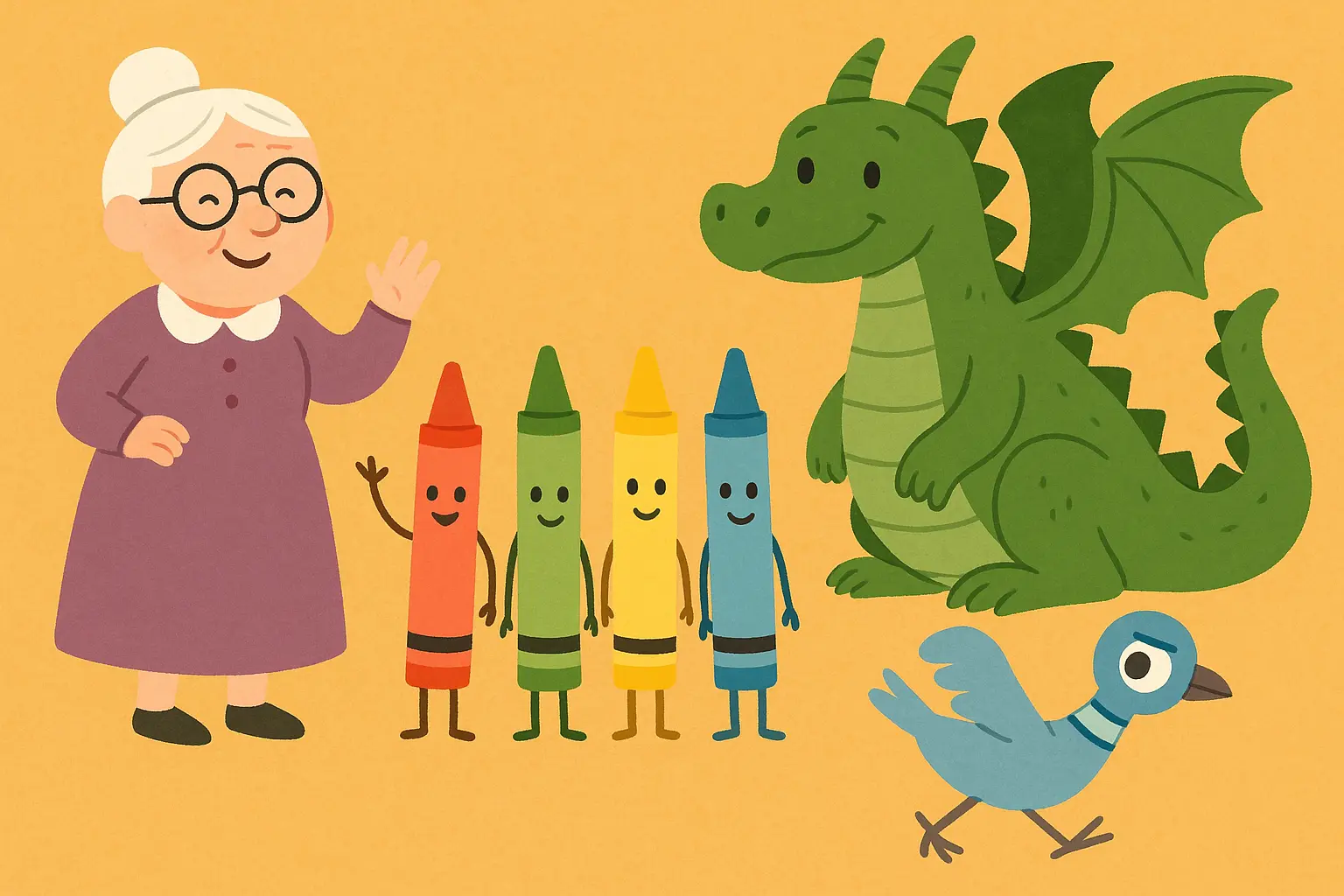
1. “There Was an Old Lady Who Swallowed a Fly” by Simms Taback
You know this one – the old lady keeps swallowing bigger and bigger animals to catch the previous one. It’s completely bonkers, which is exactly why kids love it. Each verse adds a new animal while repeating all the previous ones, so kids can show off by “reading” along.
The escalation from fly to spider to bird to cat creates increasingly ridiculous scenarios that get more absurd with each page. Fair warning: your child will definitely ask you why she swallowed a horse. I still don’t have a good answer for that, but somehow kids are totally fine with “because that’s what happens in the story.”
2. “The Day the Crayons Quit” by Drew Daywalt
Duncan’s crayons are having workplace drama, and it’s hilarious. Red crayon is exhausted from constantly coloring fire trucks and hearts, while Beige feels completely ignored and underappreciated. Each crayon writes a resignation letter with very human complaints that are surprisingly relatable.
The genius is in treating art supplies like office workers with legitimate grievances. Kids love the absurdity of crayons having feelings, plus it sneakily teaches them about different perspectives. My nephew now apologizes to his crayons when he uses them too much, which is both sweet and slightly concerning.
3. “Dragons Love Tacos” by Adam Rubin
This book is genius because it treats dragons like they’re your picky neighbor who can’t handle spicy food. The whole premise is ridiculous – dragons throwing tantrums over salsa – but kids eat it up. The deadpan delivery of completely absurd dragon facts creates consistent humor throughout.
The matter-of-fact way it presents dragon behavior (“Dragons love parties, especially taco parties”) treats these magical creatures like common pets with very specific dietary needs. My friend’s son now checks every taco for “dragon-safe” ingredients, which makes Mexican restaurants interesting.
4. “Don’t Let the Pigeon Drive the Bus!” by Mo Willems
A pigeon uses every argument, plea, and tantrum imaginable to convince readers to let him drive the bus. The humor comes from recognizing your own child’s negotiation tactics in the pigeon’s increasingly desperate reasoning. “I’ll be your best friend!” Sound familiar?
Kids love being the ones in charge for once, telling the pigeon “NO!” while recognizing their own persuasion strategies. It’s basically a masterclass in how kids try to get what they want, which makes both children and parents laugh for different reasons.
5. “The Book With No Pictures” by B.J. Novak
This book forces you to say increasingly silly words and phrases, and your child gets to watch you make a fool of yourself. The humor comes from the book’s self-aware commentary about making adults say ridiculous things while kids are completely in control.
The meta-humor of a book acknowledging its own silliness appeals to both kids and adults, though for different reasons. Children delight in the power reversal of making grown-ups say “BLORK” and “My only friend in the whole wide world is a hippo named BOO BOO BUTT.” Yes, you will say these things. Yes, your dignity will survive.
Animal Adventure Comedies
These four stories feature animal characters dealing with situations that mirror common childhood experiences. Through familiar animals facing everyday challenges, kids can process their own emotions while enjoying gentle humor that addresses bedtime anxiety, cause-and-effect thinking, and different perspectives.
6. “Llama Llama Red Pajama” by Anna Dewdney
Young Llama Llama’s bedtime anxiety spirals into full dramatic meltdown when Mama Llama doesn’t return immediately after tucking him in. The rhyming text and completely relatable bedtime struggles create gentle humor while addressing the very real fear of being alone at night.
The escalating drama of Llama Llama’s worry perfectly captures how kids’ fears can snowball out of control. “Mama isn’t coming back! What if Mama Llama’s sick?” The resolution provides reassurance while the rhythmic text makes the story soothing despite the initial panic. Plus, it validates that bedtime anxiety is normal and manageable.
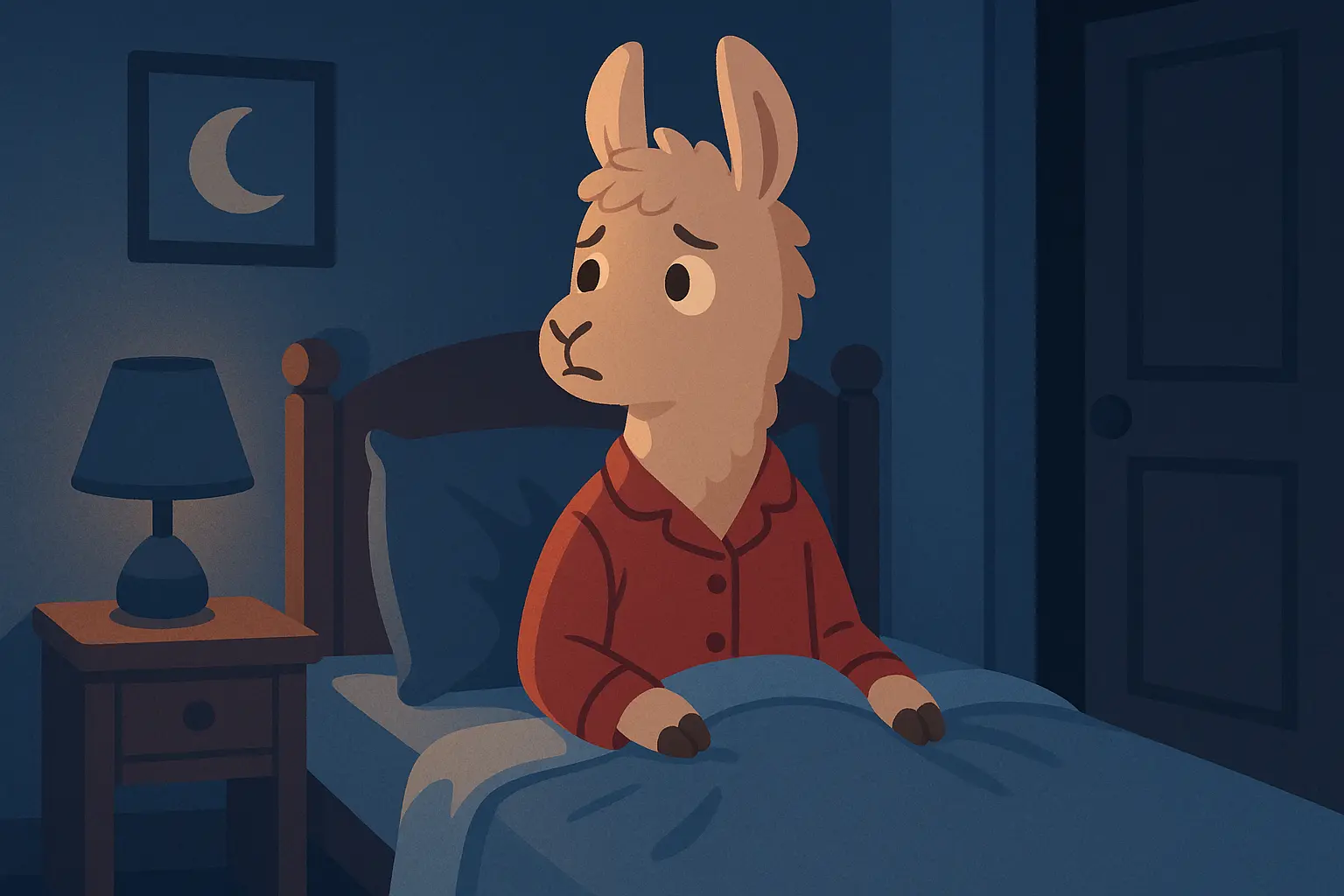
7. “If You Give a Mouse a Cookie” by Laura Numeroff
This circular story follows the exhausting chain of events that happen when you give a mouse one simple cookie. Each request leads logically to another in an endless cycle that will exhaust any adult who’s ever dealt with a child’s escalating demands.
The mouse’s relentless logic creates humor through the absurdity of how one small gesture spirals into an entire day of activities. Kids recognize the pattern of how one thing leads to another while parents recognize the feeling of being completely worn out by seemingly simple requests. “Can I have a snack?” somehow becomes rearranging the entire kitchen.
8. “The True Story of the Three Little Pigs” by Jon Scieszka
The wolf presents his obviously biased version of the classic story, claiming he was just trying to borrow sugar while suffering from a terrible cold. His sneezing “accidentally” destroyed the houses, and the pigs were just convenient snacks for a sick wolf who was clearly the real victim here.
The humor comes from the wolf’s indignant tone and creative excuses for behavior that was obviously intentional. Kids learn about different perspectives while enjoying the wolf’s ridiculous attempts to rewrite history. “I was framed!” becomes a lot funnier when it’s coming from a character who clearly wasn’t.
For parents interested in exploring more traditional narrative structures, our collection of folktale story examples demonstrates how classic tales can be reimagined with fresh perspectives, much like Scieszka’s clever retelling.
Try using different voices when reading this – make the wolf sound overly innocent and defensive while you tell the “real” story in your normal voice. Ask your child to compare the wolf’s claims with what they know really happened. It’s a great way to build critical thinking skills through humor.
9. “Interrupting Chicken” by David Ezra Stein
A young chicken can’t help but interrupt classic fairy tales to warn the characters about obvious dangers. Her well-meaning but completely disruptive interjections create humor while showing exactly how kids often engage with familiar stories.
The chicken’s inability to just let stories unfold naturally mirrors how children want to participate in or change story outcomes. “Don’t go in there!” she yells at Hansel and Gretel, completely derailing the narrative. The meta-commentary on storytelling itself creates layers of humor that work for both kids and adults who recognize their own children’s helpful story interruptions.
Wordplay and Language Fun Stories
These four stories showcase the power of playing with language through rhyming patterns, made-up words, rhythmic text, and visual comedy. They demonstrate how wordplay can create lasting humor while building phonemic awareness and reading readiness, plus they’re incredibly fun to read out loud.
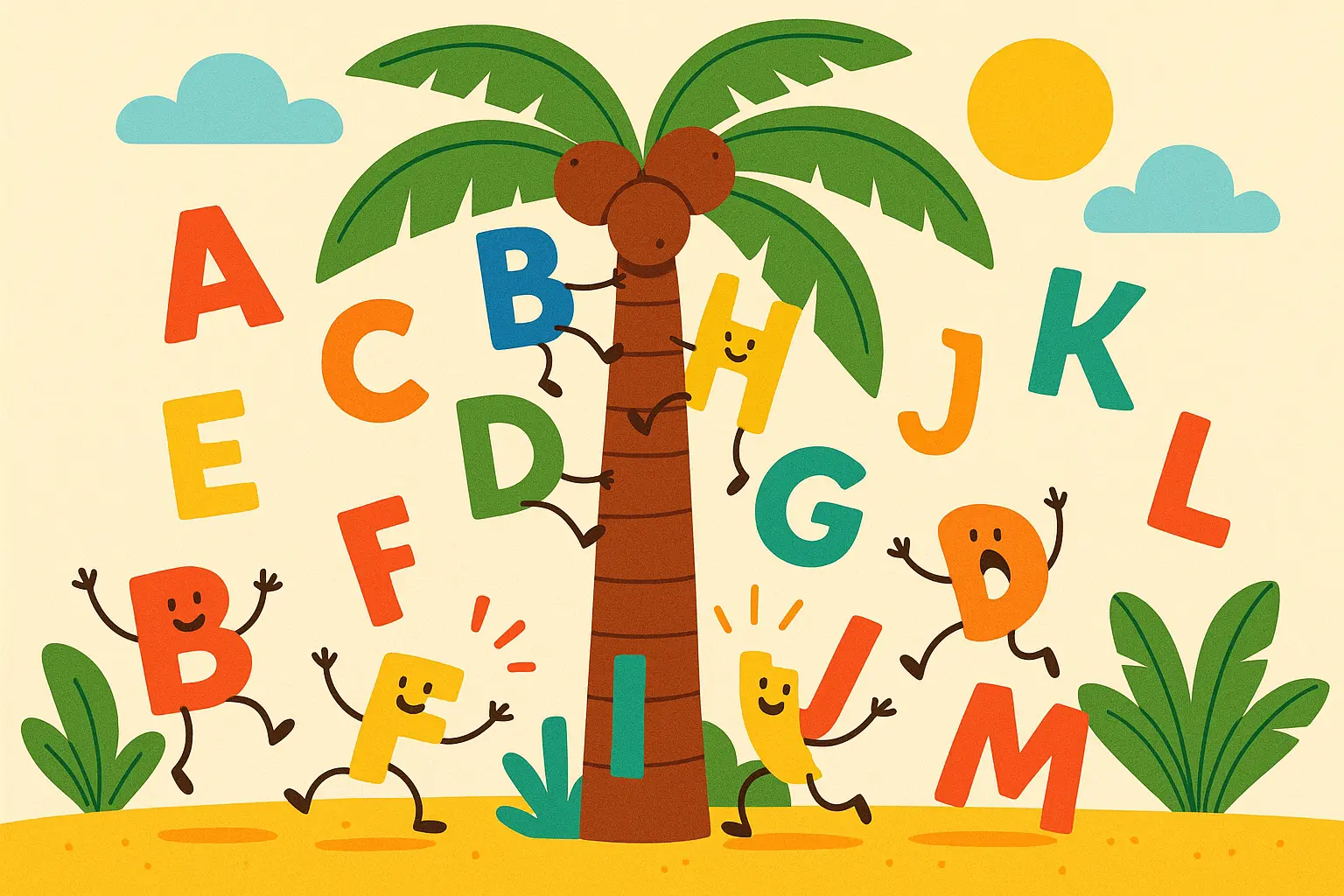
10. “Green Eggs and Ham” by Dr. Seuss
Sam-I-Am’s relentless campaign to get his friend to try green eggs and ham using only 50 different words creates humor through repetition, rhyme, and increasingly ridiculous scenarios. The limited vocabulary actually makes the story more engaging because kids can follow along easily.
The escalating locations where Sam suggests eating the unusual meal (in a house, with a mouse, on a train, in the rain) create absurd visual scenarios that get funnier with each suggestion. The final acceptance and enjoyment provides a satisfying lesson about trying new things, though good luck convincing your kid to eat anything green after reading this.
11. “There’s a Wocket in My Pocket!” by Dr. Seuss
This story introduces made-up creatures with rhyming names living throughout a house. The humor comes from the silly creature names and the child narrator’s completely matter-of-fact acceptance of these imaginary beings coexisting with normal household items.
Each page reveals a new creature whose name rhymes with a household object – the Wocket in the pocket, Bofa on the sofa, Nooth Grush on the toothbrush. Kids love the linguistic play and often start making up their own rhyming creatures, which can lead to some very creative (and occasionally inappropriate) combinations.
12. “Chicka Chicka Boom Boom” by Bill Martin Jr.
The letters of the alphabet race up a coconut tree, creating overcrowding that leads to a dramatic fall. The rhythmic, musical text and the letters’ competitive personalities create humor through their climbing adventure and inevitable tumble.
The repetitive “Chicka chicka boom boom” refrain becomes completely infectious – fair warning, you’ll be humming this for days. The personification of letters gives each one distinct characteristics while teaching alphabet recognition through entertaining chaos. Your child will definitely want to act this out with magnetic letters.
13. “Officer Buckle and Gloria” by Peggy Rathmann
Officer Buckle gives incredibly boring safety presentations until his police dog Gloria begins performing dramatic interpretations behind his back. The humor comes from the contrast between the officer’s serious demeanor and Gloria’s theatrical antics that actually make the audience pay attention.
The visual comedy relies heavily on Gloria’s expressive performances that perfectly illustrate each safety tip while Officer Buckle remains completely oblivious to why his presentations suddenly became popular. Kids love being “in on the joke” and will probably start acting out the safety tips themselves.
Bedtime-Specific Humor Stories
These four stories directly tackle bedtime routines and sleep-related anxieties through humor, role reversal, and gentle reassurance. They help kids process bedtime fears while reinforcing positive sleep habits through entertaining characters who face similar nighttime challenges.
14. “Go to Sleep, Monster!” by Lynne Jonell
A child gets to be the expert for once, teaching an increasingly sleepy monster how to follow proper bedtime routines. The role reversal creates humor while reinforcing good bedtime habits through the monster’s innocent mistakes and silly questions about human sleep customs.
The monster’s confusion about basic bedtime activities (brushing teeth, putting on pajamas, reading stories) allows children to feel knowledgeable and helpful. This empowerment helps reduce their own bedtime anxieties while teaching proper sleep routines. Plus, kids love being the ones giving instructions instead of receiving them for once.
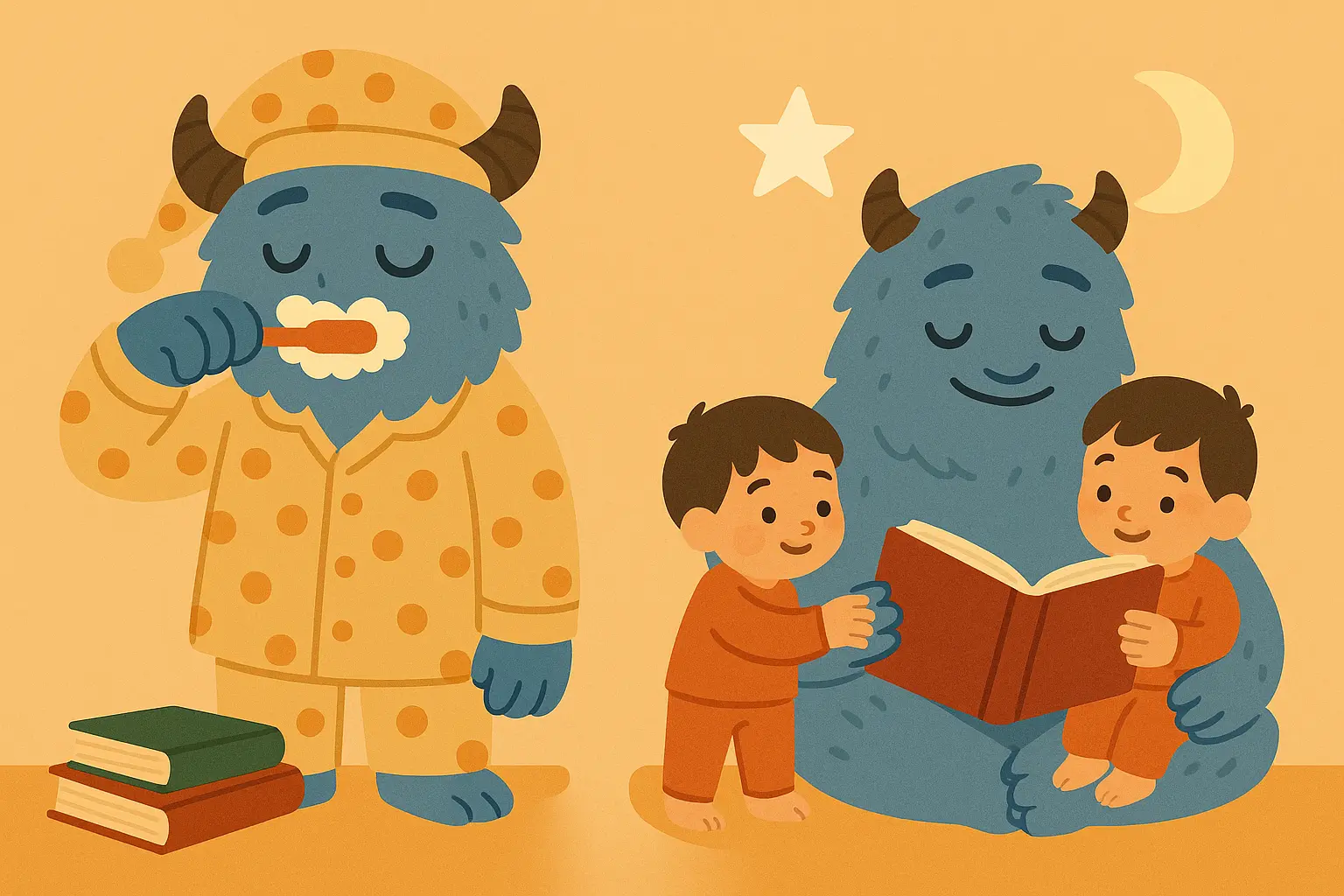
15. “The Monster at the End of This Book” by Jon Stone
Grover desperately tries to prevent readers from turning pages because there’s supposedly a monster at the end. His increasingly frantic attempts to stop the story’s progression create mounting humor with a perfect twist ending that reveals Grover himself is the monster.
The interactive format makes children active participants in Grover’s panic while building anticipation. Kids love the power of making Grover more and more worried with each page turn. The revelation that the feared monster is actually lovable Grover provides reassurance about confronting fears – sometimes the things we’re scared of aren’t scary at all.
16. “Goodnight, Goodnight Construction Site” by Sherri Duskey Rinker
Construction vehicles wind down for the night with their own bedtime routines, which is both hilarious and surprisingly soothing. The humor comes from applying human bedtime behaviors to heavy machinery – who knew a cement mixer needed to get cleaned up before bed?
Each vehicle has its own personality and bedtime ritual. The crane truck stretches, the cement mixer gets washed, and the dump truck settles in for rest. The contrast between daytime construction noise and nighttime peace helps children transition from active day energy to sleepy night calm.
17. “The Going to Bed Book” by Sandra Boynton
Various animals on a boat prepare for bedtime with silly activities like exercising on deck and brushing teeth. The simple, rhythmic text and absurd animal behaviors create gentle humor that’s perfect for winding down while establishing familiar bedtime routines.
The animals’ bedtime preparations mirror human routines but with amusing twists – they exercise, take baths, and brush teeth in ways that only cartoon animals could manage. The predictable structure provides comfort while the silly details maintain engagement without overstimulating before sleep.
Interactive and Participation Stories
These four stories transform passive listening into active participation through sound effects, movements, repetitive phrases, and physical book elements. They help maintain attention while building confidence in verbal expression and creating memorable shared experiences that make bedtime something to anticipate.
18. “We’re Going on a Bear Hunt” by Michael Rosen
A family’s adventure searching for a bear involves navigating various obstacles with specific sound effects and repeated refrains. The humor builds through the family’s determined optimism followed by their hilariously panicked retreat when they actually find the bear.
Each obstacle requires different movements and sounds – grass (swishy swashy), river (splash splosh), mud (squelch squerch). The physical participation keeps children engaged while the circular structure provides satisfying resolution when they return home safely. Fair warning: your child will want to act out the entire adventure, possibly involving furniture as obstacles.

19. “From Head to Toe” by Eric Carle
Various animals demonstrate actions that children can imitate, from clapping like a seal to stomping like an elephant. The humor comes from kids’ enthusiastic attempts to copy each animal movement, often with hilarious results.
The call-and-response format (“Can you do it?” “I can do it!”) builds confidence while encouraging physical movement. Each animal’s action becomes progressively more challenging, creating opportunities for both success and amusing attempts. Your living room may never recover from the elephant stomping phase.
20. “Brown Bear, Brown Bear, What Do You See?” by Bill Martin Jr.
This repetitive, predictable story allows children to participate by guessing what each animal sees next. The gentle humor comes from the rhythmic language and colorful animal parade that children can anticipate and recite along with after just a few readings.
The simple pattern and bright illustrations make this perfect for very young children who can quickly memorize the sequence. The predictability provides security while the animal variety maintains interest through multiple readings. Some nights you’ll read this three times in a row, and that’s completely normal.
21. “Dear Zoo” by Rod Campbell
A child writes to the zoo requesting a pet, and the zoo keeps sending increasingly inappropriate animals. Each animal is hidden behind a flap, creating suspense and humor when children discover why each animal gets returned – a giraffe is too tall, a lion is too fierce.
The lift-the-flap format adds physical interaction to the reading experience. Children delight in revealing each unsuitable pet while understanding why certain animals make terrible household companions. The anticipation of lifting each flap keeps even wiggly kids engaged.
Modern Funny Picture Books
These four contemporary stories tackle themes of self-acceptance, individuality, and personal growth through sophisticated humor that works for both children and adults. They demonstrate how modern picture books can address complex emotional topics while maintaining entertaining, accessible storytelling that doesn’t feel preachy.

22. “The Bad Seed” by Jory John
A sunflower seed believes he’s bad and acts accordingly until he decides to change his behavior and self-perception. The humor comes from the seed’s dramatically negative self-talk and his journey toward self-improvement, all delivered with perfectly deadpan comedy.
The seed’s litany of bad behaviors (cutting in line, never listening, staring at people) creates humor through his matter-of-fact confession. “I was a baaaaaaad seed,” he declares, and somehow it’s both funny and touching. His gradual transformation demonstrates that change is possible while maintaining the story’s dry, understated comedy throughout.
23. “I Want My Hat Back” by Jon Klassen
A bear searches for his missing hat, asking various animals if they’ve seen it. The minimalist illustrations and understated text create humor through what’s not said, culminating in a darkly funny conclusion when the bear “finds” his hat.
The bear’s polite inquiries contrast sharply with the rabbit’s obvious lie about not seeing the hat while clearly wearing it. Kids love being detectives, spotting the hat immediately while the bear remains oblivious. The subtle visual storytelling allows children to feel clever while adults appreciate the story’s darker implications about what happens to hat thieves.
24. “The Watermelon Seed” by Greg Pizzoli
A crocodile accidentally swallows a watermelon seed and becomes convinced a watermelon will grow in his stomach. His increasingly paranoid behavior and dramatic overreactions create humor through his completely irrational fears about internal fruit cultivation.
The crocodile’s escalating anxiety about the seed growing inside him mirrors children’s own tendency to catastrophize minor incidents. “What if it grows bigger and bigger?” he worries, imagining increasingly ridiculous scenarios. The resolution provides reassurance while the crocodile’s dramatic expressions throughout create visual comedy that works even for pre-readers.
25. “Naked Mole Rat Gets Dressed” by Mo Willems
Wilbur the naked mole rat wants to wear clothes despite his colony’s horror at this unprecedented fashion choice. The humor comes from the social dynamics and Wilbur’s determination to express his individuality through clothing, despite peer pressure to conform.
The other naked mole rats’ shock at Wilbur’s clothing experiment creates comedy through their dramatic overreactions to something as simple as wearing a shirt. The story celebrates being different while poking fun at social conformity and the fear of change within communities. It’s a gentle lesson about individuality wrapped in silly animal humor.
How These Stories Measure Up Against Key Selection Criteria
Let me break down how these 25 stories actually perform when you’re dealing with real kids in real bedtime situations. Because honestly, a story can sound great on paper but completely flop when you’re trying to get an overtired 4-year-old to settle down.
Age-Appropriate Humor That Actually Works
Stories like “Brown Bear, Brown Bear” and “The Going to Bed Book” are absolute gold for ages 3-5. The simple, repetitive language and gentle humor provide security while basic concepts remain easily digestible. Plus, kids this age love feeling smart about predicting what comes next.
For ages 5-7, “Dragons Love Tacos” and “Officer Buckle and Gloria” hit the sweet spot – simple premises combined with sophisticated absurdity that challenges without overwhelming. The visual humor supports comprehension while building reading confidence. These are the books where kids start getting jokes that make them feel clever.
Ages 7-9 benefit from “The True Story of the Three Little Pigs” and “I Want My Hat Back,” which require understanding perspective, parody, and subtle storytelling techniques. These stories reward careful attention while developing critical thinking skills. Fair warning: kids this age will start critiquing plot holes in other books.
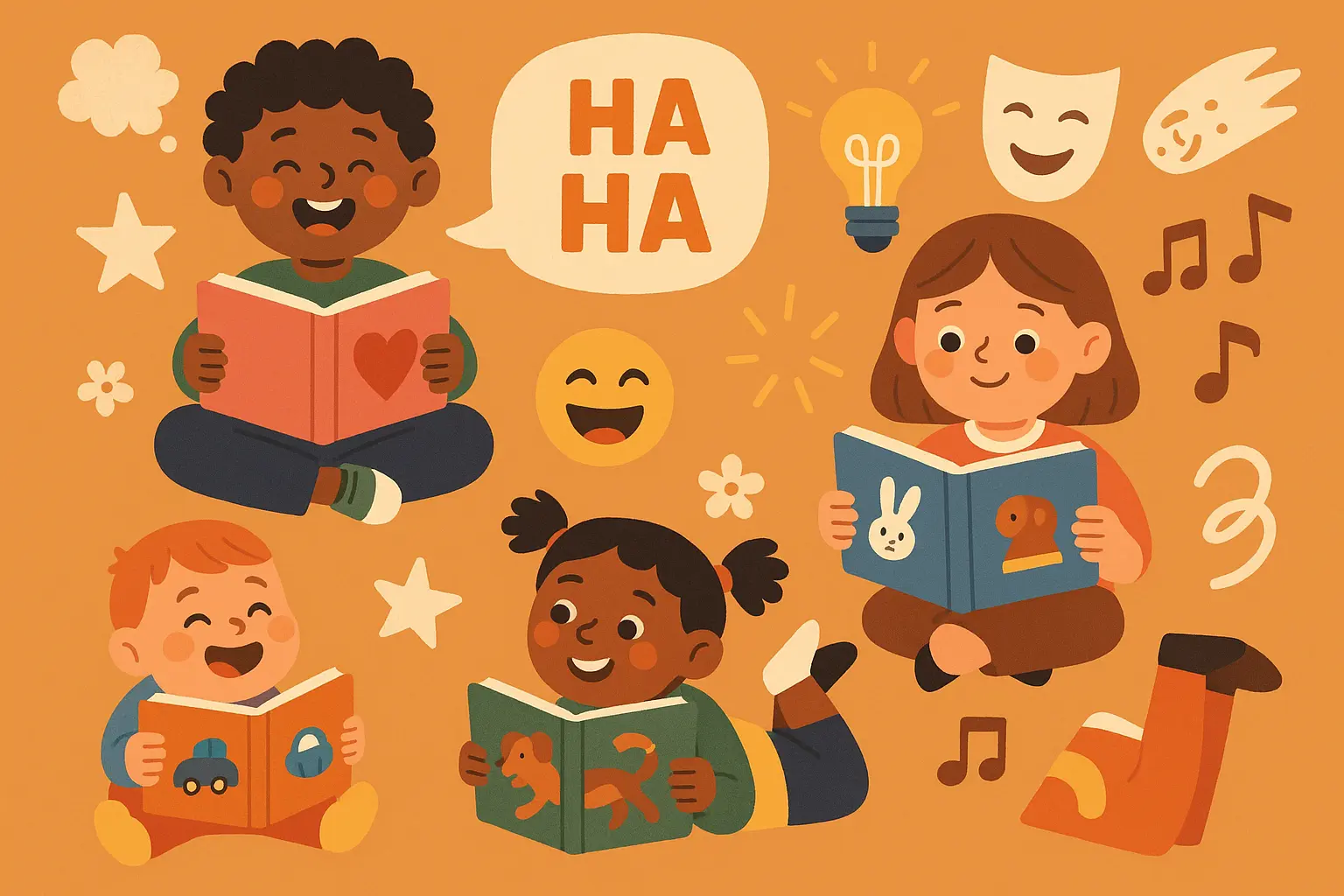
Understanding story structure becomes particularly important when selecting age-appropriate content. Our comprehensive guide to story examples that transform understanding provides deeper insights into what makes certain narratives more effective for different developmental stages.
Here’s what I’ve learned works for different skills:
For building sound recognition: “Green Eggs and Ham” and “Chicka Chicka Boom Boom” are unbeatable. Emphasize the rhythm, encourage sound play, and don’t worry if your child wants to make up their own rhyming words (even the inappropriate ones).
For social-emotional learning: “The Bad Seed” and “Naked Mole Rat Gets Dressed” tackle self-acceptance and empathy without being preachy. Discuss character feelings and relate them to your child’s experiences, but don’t turn it into a lecture.
For critical thinking: “True Story of Three Little Pigs” and “I Want My Hat Back” require kids to think about motivations and different perspectives. Ask “why” questions and explore character motivations, but keep it conversational.
For vocabulary building: “There’s a Wocket in My Pocket” and “The Day the Crayons Quit” introduce descriptive language and word creation. Play with new words and encourage creativity – linguistic experimentation is how kids learn.
Educational Value That Doesn’t Feel Like School
Dr. Seuss books are masterclasses in phonemic awareness development through repetition and rhyme. “Green Eggs and Ham” and “There’s a Wocket in My Pocket!” make language learning enjoyable while building essential reading readiness skills. The key is letting kids play with the sounds without making it feel like a lesson.
Social-emotional learning shines in “The Bad Seed” and “Naked Mole Rat Gets Dressed,” which address self-acceptance and individuality without being heavy-handed. These stories help children understand character growth and personal authenticity while maintaining entertaining narratives throughout serious topics.
Problem-solving skills develop through “If You Give a Mouse a Cookie,” which demonstrates cause-and-effect relationships through humorous scenarios. Kids learn to predict consequences while enjoying the escalating absurdity of the mouse’s logical but exhausting demands.
Try creating a “story prediction game” with “If You Give a Mouse a Cookie.” After reading “If you give a mouse a cookie, he’s going to ask for a glass of milk,” pause and ask your child what they think the mouse will want next. This builds logical thinking skills while maintaining the story’s humor. Kids often come up with even sillier suggestions than the book provides.
Interactive Engagement That Actually Keeps Them Interested
“Don’t Let the Pigeon Drive the Bus!” creates direct reader participation by making children active participants in the pigeon’s negotiation attempts. This format teaches kids to recognize persuasion tactics while building confidence in decision-making. Plus, they love being the authority figure for once.
Sound effect opportunities abound in “Chicka Chicka Boom Boom” and “We’re Going on a Bear Hunt,” encouraging vocal experimentation and rhythm development. These stories help children develop confidence in verbal expression while exploring different voices and sounds. Just be prepared for requests to act out the entire adventure.
Physical interaction through “Dear Zoo” and “The Monster at the End of This Book” uses book elements (flaps, page-turning) to create engaging experiences. These features maintain attention while teaching children how books function as interactive objects rather than passive entertainment.
Transform Your Bedtime Routine with AI-Powered Storytelling
Okay, here’s something I stumbled across recently that I was totally skeptical about at first – there are AI tools now that can help you make up new stories when you’re completely tapped out. I know, I know, it sounds weird. But honestly? After reading “Goodnight Moon” 847 times, I was desperate enough to try anything.
These 25 funny bedtime stories represent the best of traditional children’s literature, but what happens when you’ve read them countless times and your kid starts reciting them from memory? That’s where something like Nairrate’s AI-powered Story Starters Generator comes in handy – it can create unique opening lines tailored to your child’s specific interests and sense of humor.

For parents ready to explore creative alternatives to traditional bedtime stories, our bedtime story generator offers endless possibilities for creating personalized narratives that capture your child’s imagination while maintaining the humor and comfort they crave.
Instead of reaching for the same familiar books night after night, you can get it to create stories about your kid’s stuffed animals or that weird thing they did at the grocery store. Picture starting with “The day your pet hamster decided to open a comedy club in his cage…” or “When the vegetables in our refrigerator formed their own superhero team…” It’s not going to replace your favorite books, but it’s pretty handy when you need something fresh and your brain is fried.
The repetition problem that exhausts parents while children crave familiarity gets addressed through endless variations on beloved themes. You can generate prompts for “silly animal adventures” or “magical bedtime mishaps” that maintain comforting patterns while offering fresh content every night. No more pretending you can’t find that one book they want to hear for the millionth time.
Age appropriateness concerns disappear when AI understands developmental stages and generates content matching your child’s current comprehension level. The technology adapts humor styles automatically – creating simple slapstick scenarios for younger children or sophisticated wordplay for developing readers.
When exploring AI storytelling options, understanding the fundamentals of effective narrative construction remains crucial. Our guide on how to write a story using brain science reveals the psychological principles that make certain stories more engaging and memorable for young minds.
You can incorporate specific family details, cultural backgrounds, and recent experiences into story generation. Your bedtime stories can feature your actual pets, reflect your family’s unique dynamics, or process recent events through humorous, child-friendly narratives. It’s like having a personalized storyteller who knows your family’s inside jokes.
The technology also serves as a creative partner for parents who want to develop original bedtime stories but struggle with writer’s block. You get structure support for story arcs that build humor while winding down to peaceful conclusions, character development suggestions for memorable personalities, and dialogue ideas that sound authentic and entertaining.
Final Thoughts
For parents seeking additional inspiration beyond traditional picture books, exploring the best kids bedtime stories collection can provide fresh perspectives on creating meaningful nighttime reading experiences that combine entertainment with emotional connection.
Look, the truth about bedtime stories is this: some nights they’ll work like magic. Your kid will giggle at all the right parts, snuggle up contentedly, and drift off to dreamland like something out of a parenting magazine. Other nights? They’ll interrupt every page, demand to know why the pigeon can’t just take an Uber, and somehow end up more wired than when you started.
Both scenarios are completely normal. These 25 funny bedtime stories represent time-tested approaches to combining entertainment with education, comfort with engagement, and laughter with learning. Each story offers unique strengths – from cumulative storytelling that builds anticipation to interactive formats that encourage participation, from gentle humor that soothes bedtime anxiety to sophisticated wordplay that develops language skills.
The magic happens when you match stories to your child’s developmental stage, attention span, and current interests. A 3-year-old might giggle endlessly at “There Was an Old Lady Who Swallowed a Fly” while a 7-year-old appreciates the subtle humor in “I Want My Hat Back.” Understanding these nuances helps you curate a bedtime library that grows with your child rather than against them.
Let’s be real – some nights, even the funniest story won’t work. Your kid might be overtired, or worried about something, or just in one of those moods where everything is wrong. That’s okay. Sometimes you just survive bedtime and try again tomorrow.
Also, don’t feel guilty if you skip pages when a book is dragging on forever. We’ve all done the “Oh look, the end!” move when we realize it’s 9:30 and we still have teeth to brush.
Remember that bedtime stories serve multiple purposes beyond entertainment. They’re building vocabulary, processing emotions, establishing routines, and creating precious shared experiences that children carry into adulthood. The laughter you share over a silly pigeon’s demands or a crocodile’s watermelon worries becomes part of your family’s unique story.
Some nights you’ll read the same book three times in a row. Embrace it. Repetition is comfort food for little brains. Other nights you’ll discover a new favorite that becomes part of your regular rotation. Both experiences are wins.
Whether you stick with these classic funny bedtime stories or explore AI-powered personalization tools when you’re desperate for something new, the goal remains the same: creating positive associations with reading, learning, and bedtime itself. When children look forward to story time, they’re developing lifelong relationships with books, imagination, and the comfort of shared laughter before peaceful sleep.
The real win isn’t creating perfect bedtime routines – it’s those moments when you’re both cracking up over something silly together. Those giggles before sleep? That’s the good stuff. That’s what they’ll remember when they’re grown up and reading to their own kids.
So grab a few of these books, lower your expectations, and remember that even if bedtime is chaos, at least it’s fun chaos. And hey, if all else fails, there’s always “Goodnight Moon” for the 848th time. Sometimes the classics are classics for a reason.



Add comment